Dashboard
Service Tile Enhancements: Time and Percentage Details Enhancement
The Service Tile now gives you enhanced visibility into service health by displaying uptime, degraded time, and downtime for Service Map nodes. You can toggle between percentages or absolute hours, giving you more granular monitoring and helping you quickly assess service reliability and performance trends directly from your dashboard.
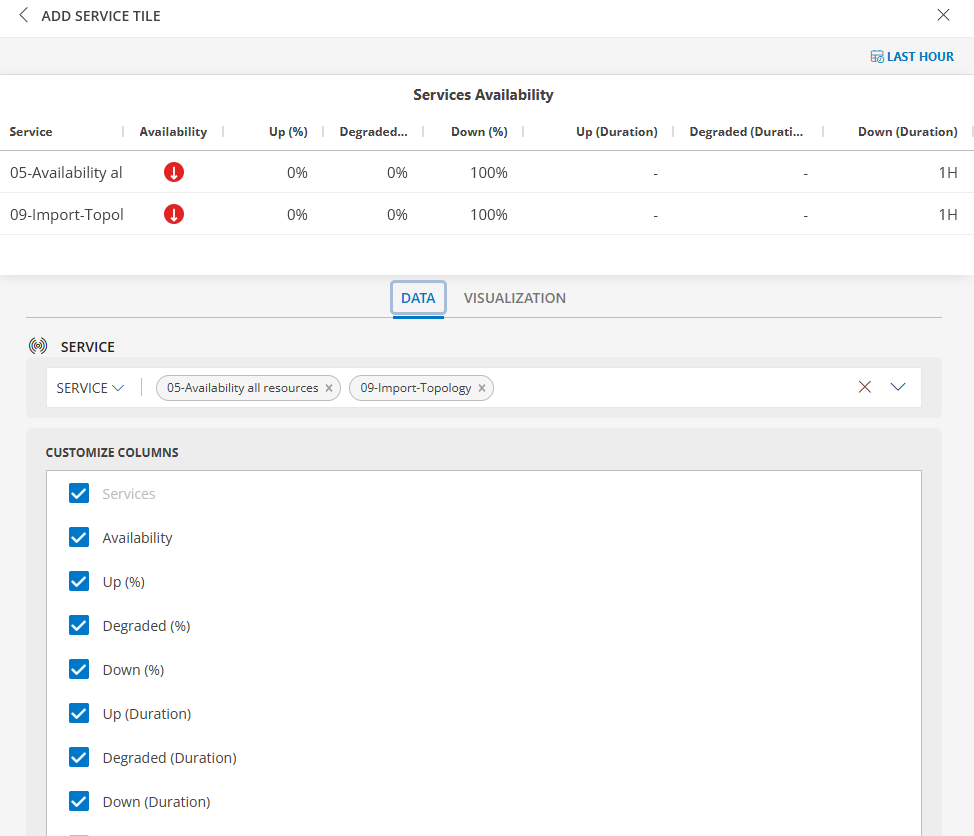
Enhanced Doughnut View: Displays Absolute Values Enhancement
Doughnut charts now display absolute values in the center when you hover over a segment, giving you immediate visibility into actual counts. This makes data easier to interpret at a glance and improves your overall dashboard experience.
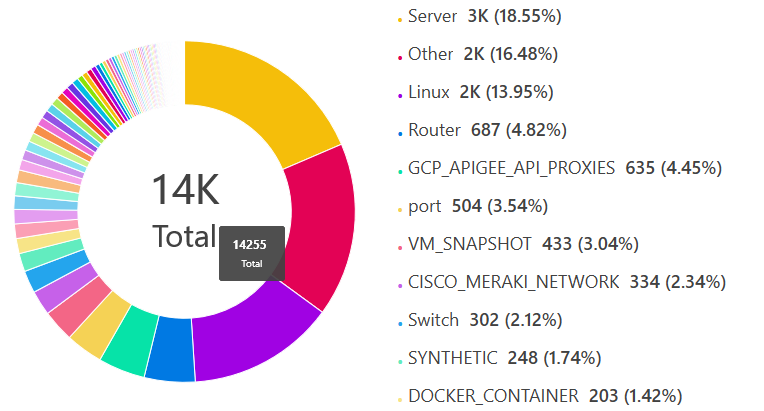
Resource Management
Resource Assignment in Credentials Enhancement
The Credentials UI now enables you to assign resources to a credential using filter-based criteria, manual selection, or both.
- Filter-Based Assignment: Define dynamic rules in the Filter Criteria field to automatically assign resources based on query-based filters.
- Manual Assignment: Manually select specific resources using the Manually Assign Resources dropdown.
This enhancement reduces manual effort and ensures credentials are consistently applied to the right set of resources
See Manage credentials for more information.
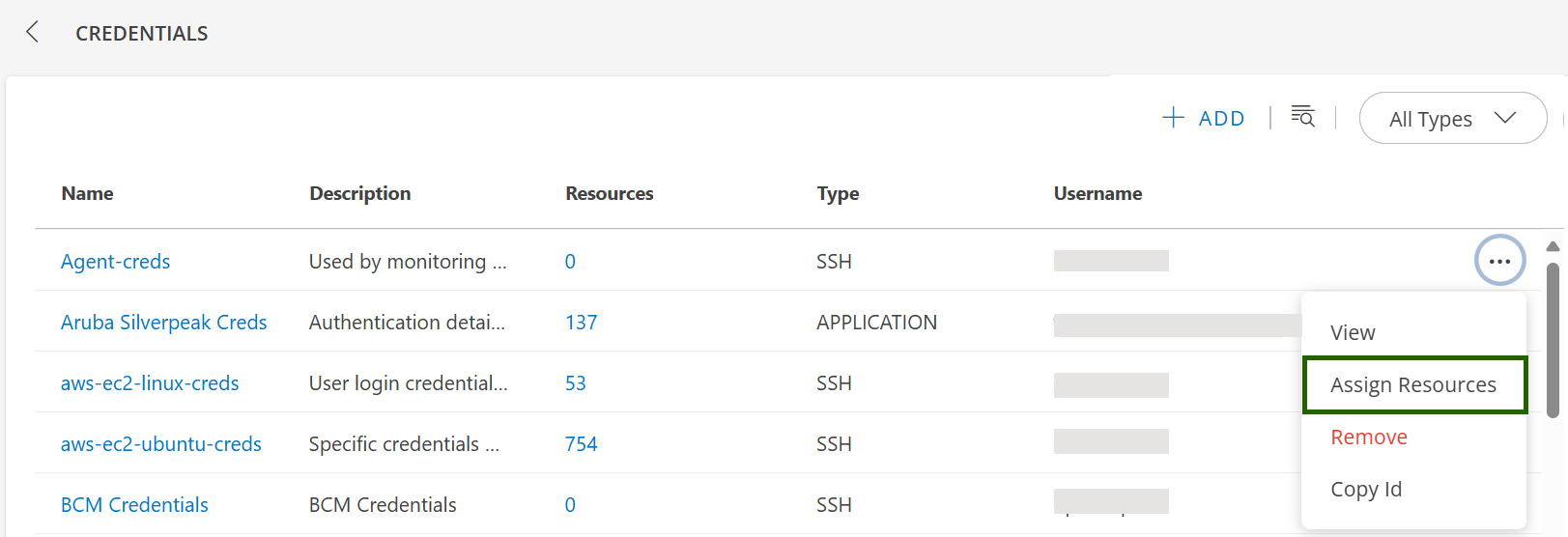
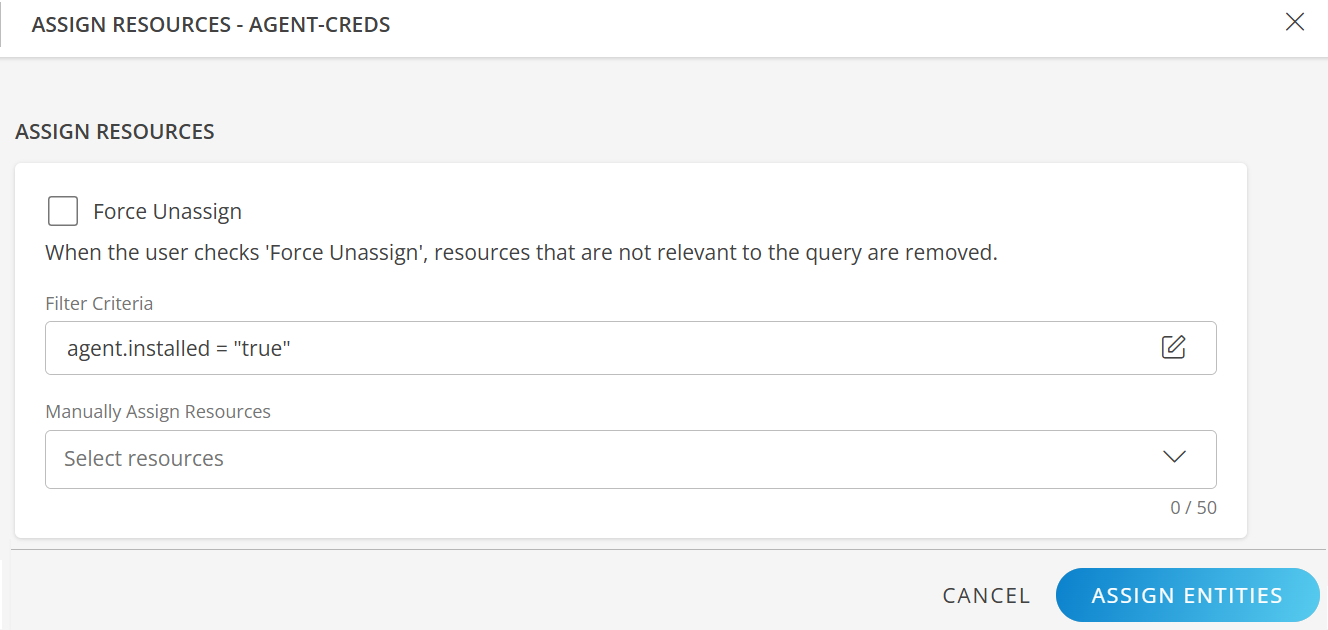
Event Management
Automatic Healing of Alerts from Incident Resolution Enhancement
When you enable the Alert heal by incident option in Service Desk settings, any alerts linked to an incident are now healed automatically when the incident is resolved or closed. This reduces manual effort and keeps alert and incident states in sync, though you can still choose to heal alerts manually if needed.
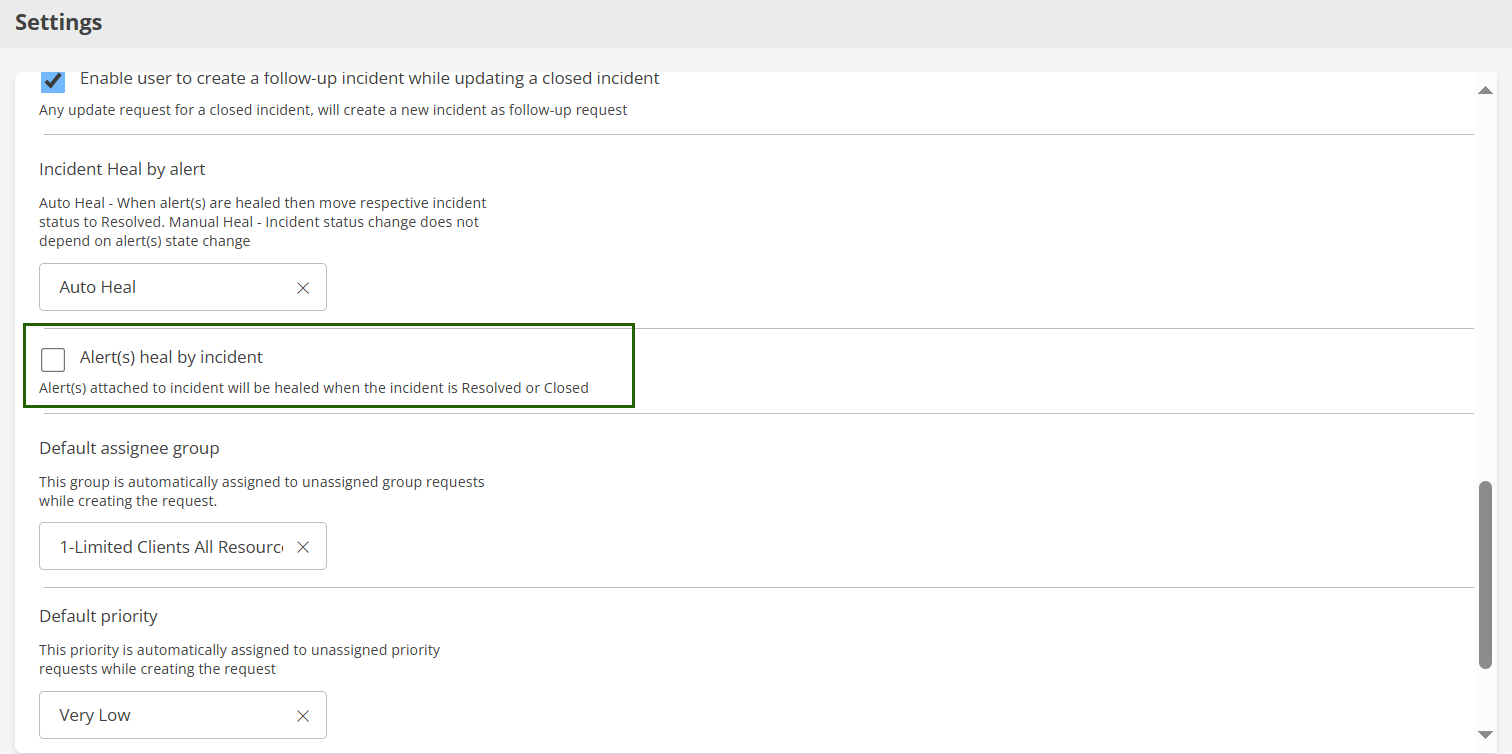
Log Management
Deprecation of OAuth2 for OpenTelemetry Ingestion Enhancement
Log ingestion for the OpenTelemetry Collector now uses a webhook token–based approach instead of OAuth2 authentication. While metrics, logs, and traces continue to be supported, the current OAuth2-based ingestion integration will be deprecated. If you have an existing integration, you must migrate to the new token-based model to ensure uninterrupted log ingestion.
Process Automation 2.0
Test Individual Tasks and Workflows Enhancement
Process Automation now lets you validate workflows before deployment with two new options: Test Individual Tasks and Test Complete Workflows. These features help you catch issues early, verify logic, and reduce the risk of failures in production.
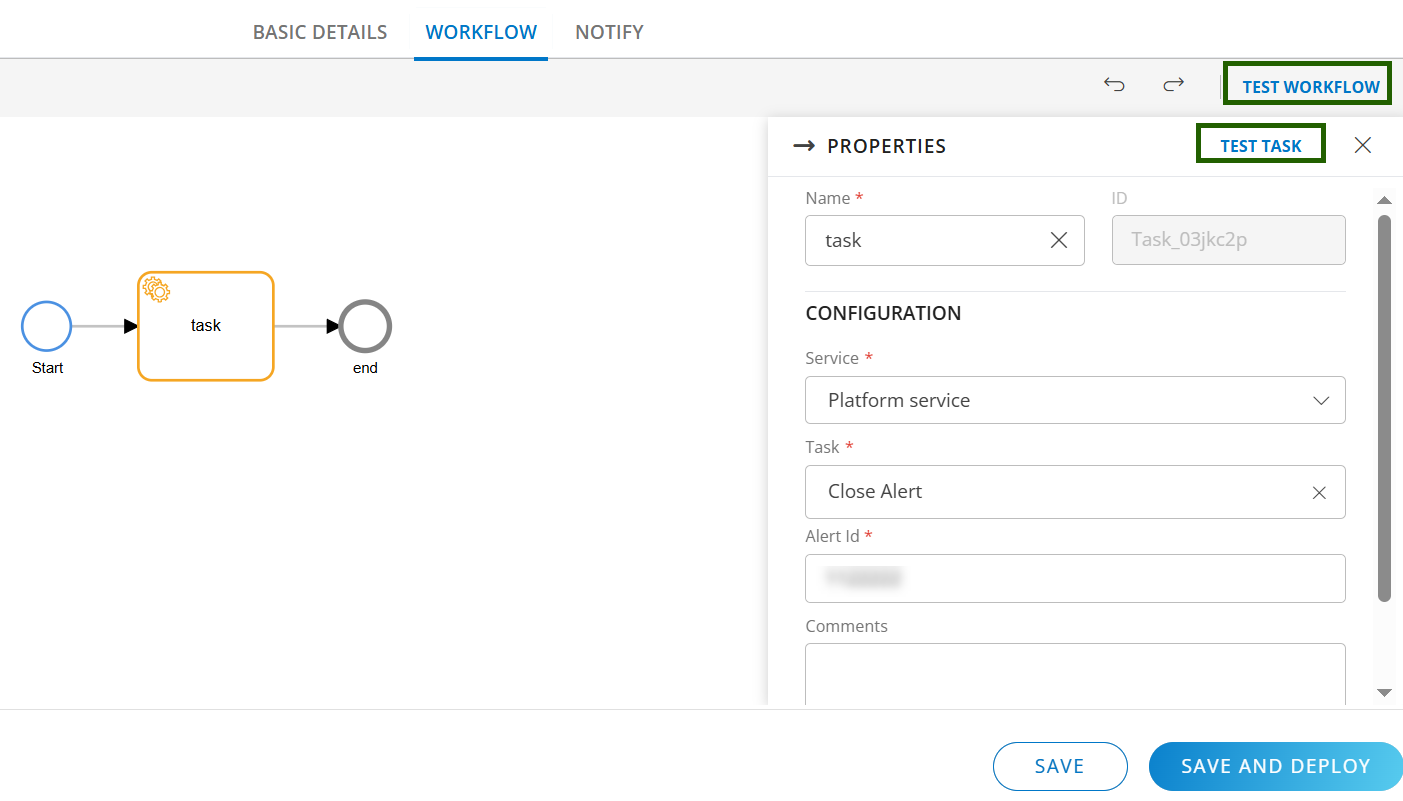
Test Individual Tasks
You can run a task in isolation as soon as you configure it. This makes it easy to confirm the task logic and outputs before adding it to a full workflow.
Benefits
- Validate a task immediately after entering required fields.
- Receive prompts for any tokens or variables needed by the task.
- Instantly view detailed results and outputs for quick troubleshooting.
Test Complete Workflows
You can execute an entire workflow end-to-end in a test run before pushing it live. This ensures all tasks function correctly in sequence and provides early visibility into potential issues.
Benefits
- Run the full workflow with all required inputs.
- Get detailed logs and outputs across every task.
- Identify and resolve errors before production deployment.
Note
These options are available only for the Automation category.Tracing
Trace Custom Views Enhancements Enhancement
You can now use comparison operators such as > and < in custom view filters, giving you more precise and flexible control over trace data. In addition, you can copy data directly from custom views and export selected datasets, making it easier to analyze and share trace results outside OpsRamp.
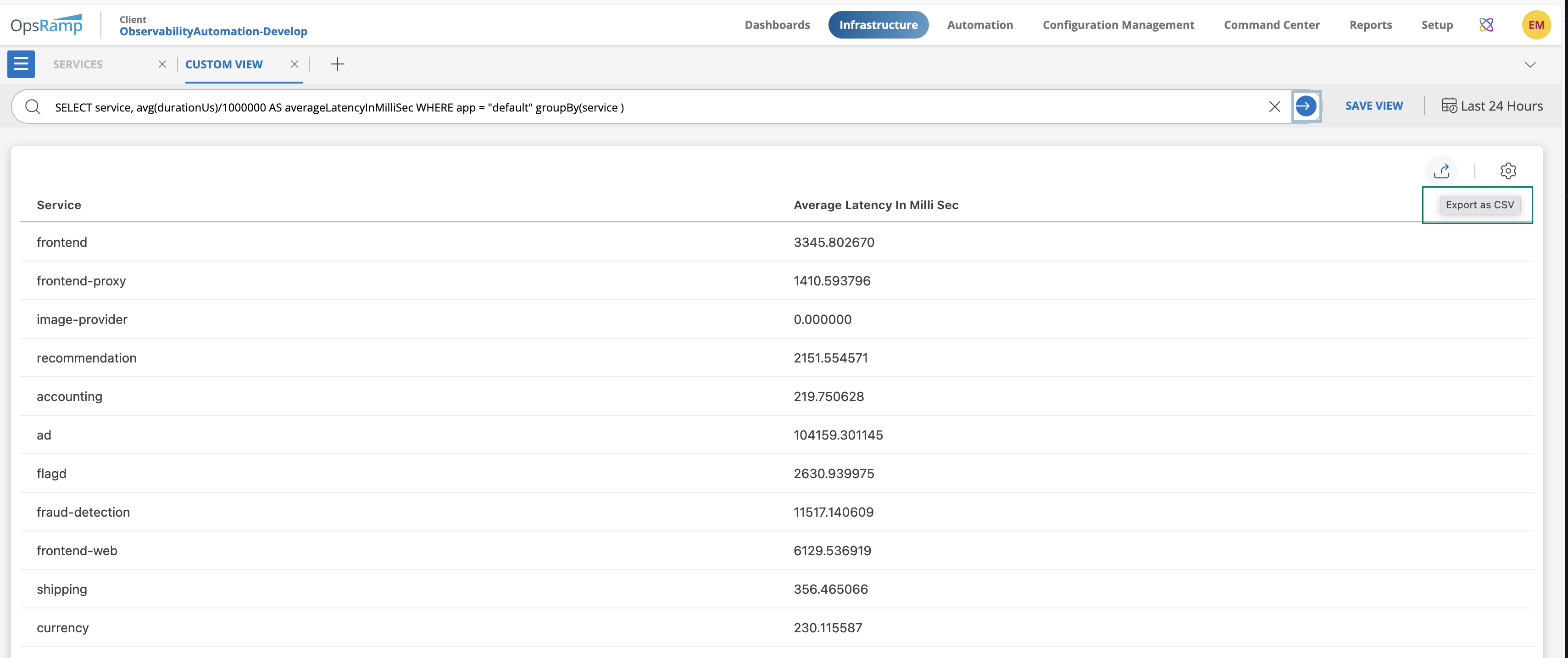
Updates in Upcoming Release
Meraki Device Type Classification Update
Starting with the 2025.10-U1 release, resource type classification for certain Cisco Meraki devices will be updated to better reflect their actual functionality.
Update Details:
- Models starting with CW → reclassified as WLAN Access Points
- Models starting with Z4 → reclassified as Firewalls
- Models starting with C9300 → reclassified as Switches
- Previously, these devices were grouped under the “Other” resource type.
Impact:
- If you have existing resources currently categorized as Other and linked to Other templates, data collection for these resources will stop after this change.
- To maintain uninterrupted monitoring, you must reapply the correct templates aligned with the new resource types.
Deprecation Notice: Classic KB and Classic Scheduled Maintenance
With the 2025.10-U1 release, the Classic Knowledge Base (KB) and Classic Scheduled Maintenance user interfaces will be deprecated. See Classic Knowledge Base and Classic Scheduled Maintenance for full details.
To ensure continued support and access to new enhancements, you should transition to the latest Knowledge Base and Scheduled Maintenance modules before the deprecation takes effect.